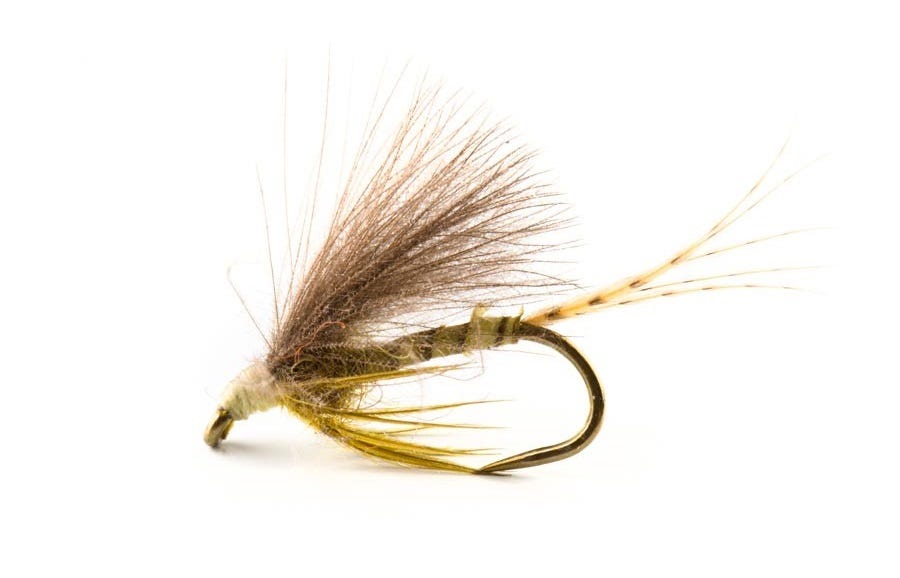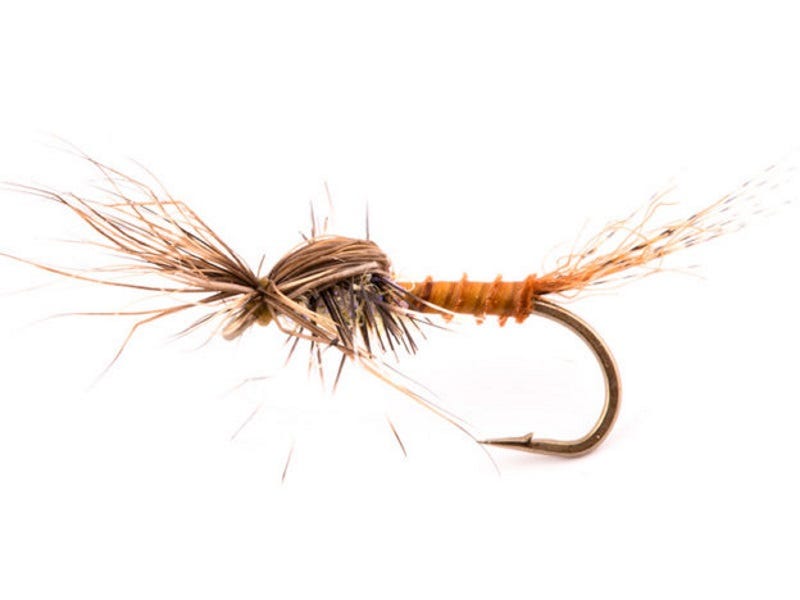Fly Fishing with Emerger Patterns: Why They Matter to You


Have you ever been in the middle of hatch flurry, whether it be mayflies, caddis or midges... and seen dozens, if not hundreds, of trout rising?
You tie on dry fly pattern after dry fly pattern, and after a dozen fly changes you might, if you are lucky, get one trout to eat. You see adult duns on the water everywhere, but still can’t seem to get the trout to eat your matching fly pattern.
"What the heck am I doing wrong?" you ask yourself.
"I am getting the perfect drag-free drift presentation every time, but still they won’t eat my dry fly!" as you mutter expletives under your breath.
Why High-Floating Patterns Don't Work and Emergers Do
I was in this exact situation about 5 or 6 years ago on the Missouri river, in a braided side channel where every single trout in the river was eating every other bug but mine. Frustration was getting the best of me when I decided to sit and regain my composure.
I began watching rise-forms and noticed something new to me as an angler.
Order your emergers online here.
Every high floating dun that was passing by was being ignored, yet the trout would rise inches away to "invisible bugs". I could see energetic swirls, boils and bulges just beneath the surface. Headless head to tail, porpoising rise-forms if you will. Immediately a light bulb went off in my head.
"They are eating bugs (emergers) just beneath the surface!"
I began sifting through my fly box to see if I had something that would break through and ride within the surface film to imitate the emerging blue winged olives.
Pheasant & Partridge Soft Hackles for the Eats
I found a Pheasant and Partridge soft hackle, which I had never fished before. I would later thank the fishing Gods as my evening of fishing had just made a 180. For the next hour I would land over a dozen trout on that soft hackle, often dead drifted and then swing at the end of the drift.
A far cry from the single trout that had "mistakenly" taken one of the high-floating, dry-fly patterns I was casting for the previous 90 minutes.
Want to buy fly tying materials to tie these flies yourself?
Since that fateful day, I no longer fish, at least not often, dun mayfly or caddis patterns on the Missouri River.
What is Emergence for an Insect?
An often overlooked important stage of an insect’s life cycle, by an angler of any skill level, is the emergence. Every dun you see on the water must spend time between its nymphal stage and winged adult stage as an emerging insect, relieving itself form it’s "shuck" within the surface "film" or meniscus.
This barrier between the subsurface world and top water world becomes a struggle for insects trying to break through, making them the easiest meal for trout. In my opinion, easier than any other stage of its life cycle. Sometimes they will spend up to 30 minutes or more struggling to emerge from the nymphal shuck in the film just below the surface.
Do you want to tie your own emerger patterns?
Reading up on the subject has provided me with information that has given me a better understanding of what makes emergers and cripples so important.

What is a Cripple Fly Fishing Pattern?
A cripple, an insect that does not fully emerge from the nymphal shuck is eternally stuck in the surface film making it another easy meal for the trout.
Only a small percentage of insects actually fully transition from nymph to winged adult, and, those that do, may only spend a few minutes on the surface of the water while letting its newly emerged wings dry... just before before flying away.
Thus making cripples and emergers very important fly patterns to imitate in a very selective trout fishery. Spinners are equally as important, but that would be another blog.
So how do I Fish a Cripple or Emerger Fly Pattern?
The difference between cripples and emergers is very simple. An emerger does not break the surface film until fully emerged as a winged adult and a cripple will partially break through with tailing shuck still attached, which a high percentage fails to fully emerge.
Therefore, when fishing an emerger, you want the entire fly to be subsurface within the surface film. Essentially invisible to the naked eye. The best way to present this is as an unweighted dropper below a high floating dun. I typically use 10-12" of tippet between flies.
You can buy the tippet from us if you need it right here.
A great choice during a mayfly hatch would be leading with a larger Parachute Adams or Purple Haze. Great emerger patterns include klinkhammers, almost any soft hackle, or a CDC biot emerger in any mayfly flavor. Specific mayfly emergers include Mercer’s Epoxyback Emerger, RS2 and Sparkle Duns.
One of the best for caddis is Lafontaine’s Sparkle Pupa. Other popular Caddis emergers include Translucent Pupae, Translucent Emerger, Silvey’s Edible Emerger and my personal favorite, the Double Duck.
While cripple patterns are designed to be partially emerged and breaking through the surface film, the best way to fish these are just as you would any dry fly. Sometimes a greased leader can be very effective in keeping the fly within the film, imitating the partially emerged adult. Our favorites here at North 40 are the TFP Cripple, PMD Wike’s Sunburnt Cripple, Nyman’s DOA, Harrop’s Last Chance, Quigley’s Film Critic, Quigley’s Half Down, Quigley’s Sparkle Flag to name a few.
So the next time you are fishing a hatch, don’t underestimate the power of the emergence. Cripple and emerger fly patterns can save an otherwise fruitless day of fishing. Take a few minutes to observe what is going on around you.
Don't be caught out without emerger patterns. Order yours here.
Watch rise forms to get an indication of what trout might be eating. Finding out what the fish are feeding on first most likely will determine your catch rate. A good rule of thumb to always remember when choosing your fly patterns would be in this order of importance: shape (genus), size, and then color.
Above all else, presentation trumps all. Always.
